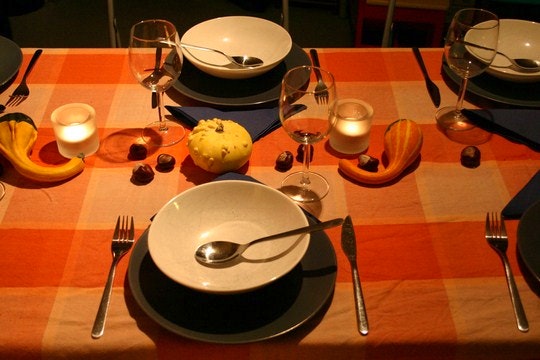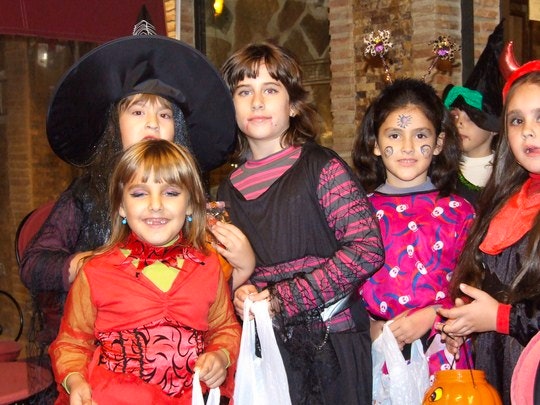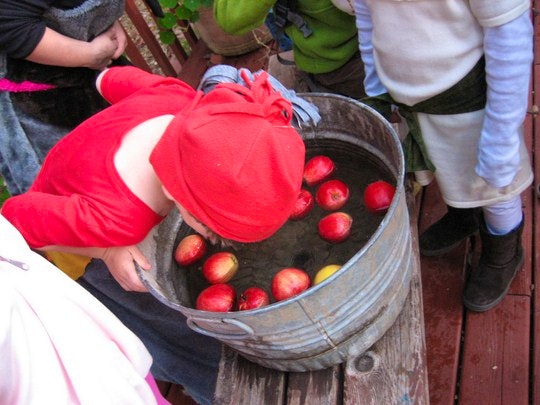This festival is held in honour of those who’ve passed on, and can be found in almost every culture around the world, along with numerous rituals and tradition. Nearly every culture includes a community-wide festival, complete with merry music, plenty of food, and naturally some interesting costumes.
History of Halloween
Halloween was once known as Samhain, a pagan tradition that the Catholics did not approve of, and thus attempted to Christianise it. They did this by including Samhain traditions into their All Hallows Eve festival, which was known as All Saints’ Day and occurred on the 1st November. Over the decades, All Hallows Eve slowly turned into Hallows Eve, and finally was abbreviated to Hallowe’en.
Samhain stands for “summers end” in Irish and was held annually on the 31st October which was once considered to be the end of the old year, with the New Year beginning on 1st November. A large bonfire was made, and a celebration was held around it. Then towards midnight, the fires were extinguished, only to be re-lit in the very early morning hours, to usher in the New Year.
Samhain is one of the four main celebrations (known as sabbats) that pagans celebrate each year. At this sabbat, thanks are given for the harvest and gifts of food such as soul cakes are left on doorways for wandering spirits to consume. It is the one day of the year when the ‘veil between worlds’ was believed to be at its thinnest and druids would try their hand at soothsaying, while witches would make scrying mirrors or read runes and tarot cards. In each home the dinner table was set with extra places laid between the households’, so the departed could also enjoy a home-cooked meal.
Traditions
Carved pumpkins
The time-honoured tradition of pumpkin carving started only a couple of decades after Samhain became known as Halloween. Originally, turnips were hollowed out and candles or a lit coal were placed inside, to shed light in the darkness. A story associated with this features a character named Jack trying to outwit the devil and losing – Jack is then forced to wander the world for eternity, carrying only his vegetable lantern, leading to the phrase ‘Jack ‘o lantern’.
Turnips weren’t common in North America, while pumpkins were, leading to those becoming the traditional Halloween décor of present day. It is also a tradition found in many cultures, whereby a lit candle is placed in a window to guide departed spirits home again.
Games were naturally played at the festival, and the Catholic tradition of dressing children up as saints or devils for All Hallows Eve harkens back to the costumes pagans wore to confuse evil spirits. The belief was: that if one dressed like an evil spirit, the spirits couldn’t discern the costume wearer was human and thus couldn’t cause mischief or harm to them. Soul cakes were laid out for spirits to eat so they could nourish themselves and continue their journey, though children who were good or wore well-made costumes also received these sweet treats.
There was an ancient tradition that involved the rich feeding the poor on this day, but over the centuries the begging for food slowly became more of a children’s game to get sweets. If children were not given a treat, they’d have to do a trick such as sing, dance or recite verses, and if pleased, the house owner would give a gift of sweets. Failing that, innocent acts of property or garden damage (such as soap on the windows, or paper in trees) was carried out on the offender’s property.
Herbs as decorations
Wreathes of herbs were twined together as decorations, and common ones included the following: willow, birch, rosemary, rue, vervain and artemisia. These wreaths were viewed as both pretty additions to the home, as well as potent protection charms which would prevent evil from entering, while inviting kindly spirits in.
Bobbing for apples
This game was usually only played on Halloween, and involved an apple tied to a string being placed in a barrel of water or suspended in the air. Participants couldn’t use their hands and needed to catch the apple with their teeth. The person who managed to take a bite of the apple was predicted to marry within the year.
Let us know what you’re doing for Halloween this year, be it giving into the holiday atmosphere, and dressing up as a hobgoblin, or staying home to watch the usual horror film festival on television.
Main image credited to Miala (Flickr)








